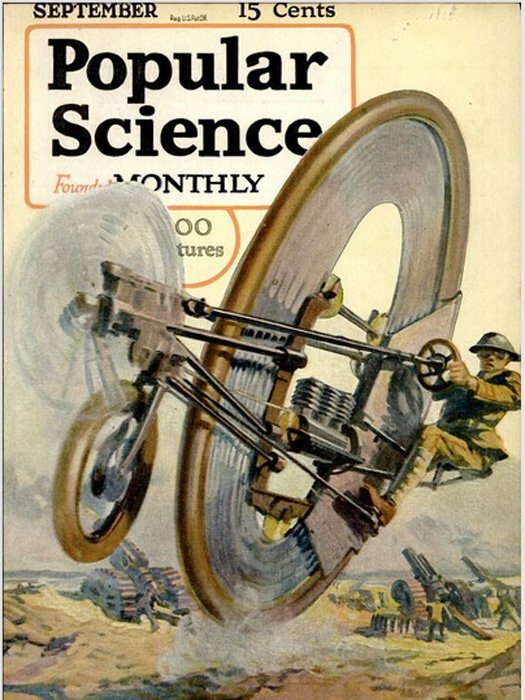

I have never understood why people who aren’t circus clowns ride unicycles. They seem designed specifically to create wipeouts and, subsequently, schadenfreude (a lesson our writer learned all too well in 1967 when he undertook the massive challenge of learning to ride one). But who knew that tucked away in the pages of PopScis past were some of the weirdest, most delightfully retro-futuristic unicycles of all time? Now we all do. And I don’t think it’s a stretch to say our lives are all the better for it.
Click here to launch the archive gallery.
There’s the gyroscopic unicycle whose creator claimed it could reach speeds of up to 400 miles per hour, the motorized unicycle invented by an Italian policeman who rode it all the way from Milan to Rome, the unicycle war tank, complete with built-in machine gun and a one-in-a-million photo of the creator of a DIY moto-unicycle astride his creation wearing a leather jacket like the leader of the most badass (and probably only) unicycle gang in the world.
You’ll find all this and more in this week’s archive gallery. Join us as we delve into the depths of the unicycle’s history and all of its bizarre evolutionary branches that never quite took.









